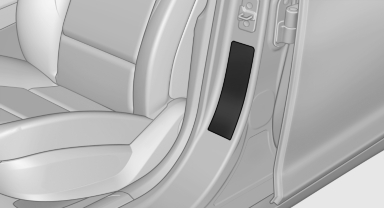Determining the load limit

Determining the load limit
1. Locate the following statement on your vehicle’s placard:
▷ The combined weight of occupants and cargo should never exceed XXX kg or YYY lbs. Otherwise, damage to the vehicle and unstable driving situations may result.
2. Determine the combined weight of the driver and passengers that will be riding in your vehicle.
3. Subtract the combined weight of the driver and passengers from XXX kilograms or YYY pounds.
4. The resulting figure equals the available amount of cargo and luggage load capacity.
For example, if the YYY amount equals 1,000 lbs and there will be four 150 lbs passengers in your vehicle, the amount of available cargo and luggage load capacity is 400 lbs: 1,000 lbs minus 600 lbs = 400 lbs.
5. Determine the combined weight of luggage and cargo being loaded on the vehicle. That weight may not safely exceed the available cargo and luggage load capacity calculated in Step 4.
See also:
Выбираем жидкость для омывания стекол
Автомобильные «дворники» появились около 80 лет назад, омыватели ветровых стекол – чуть больше полувека. Незамерзающие жидкости, зовущиеся в народе «омывайками», &ndas ...
BMW X5: lower tailgate
Opening
Opening
Pull the lever and swing the tailgate downward.
The opened tailgate can be loaded with up to
550 lbs/250 kg.
Closing
Fold the tailgate up and press closed. ...
Storing a channel
1. "Radio"
2. "Satellite radio"
3. If necessary, open "All channels" or the desired category.
4. Select the desired channel.
5. Press the controller again.
6. Press ...
